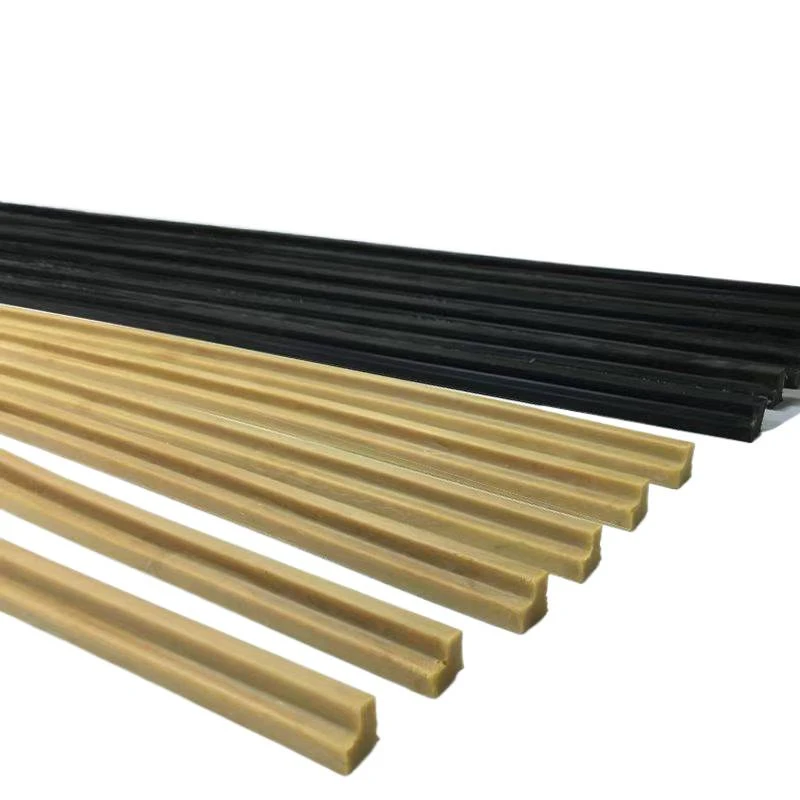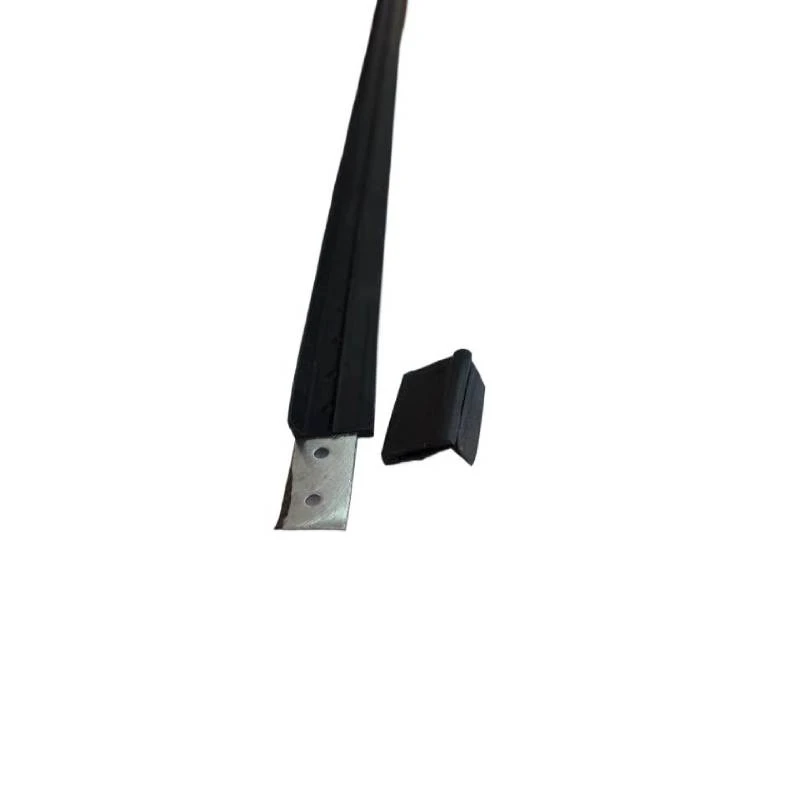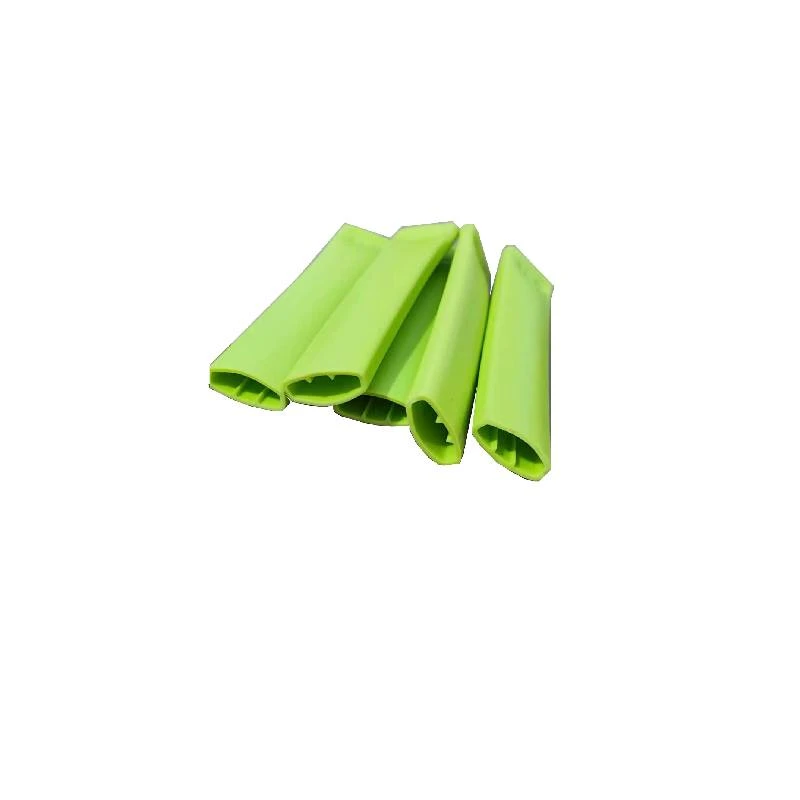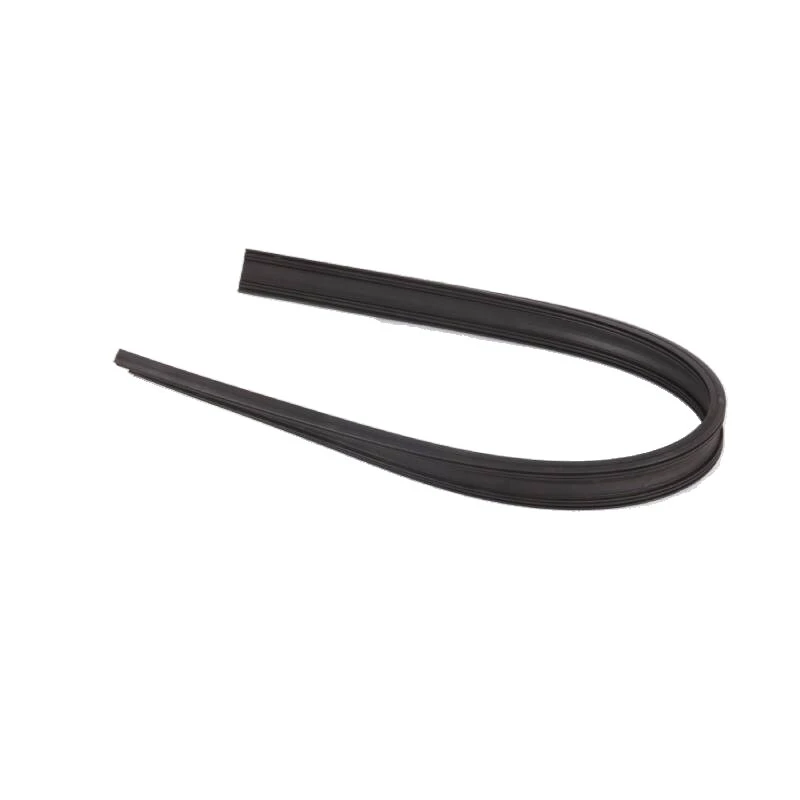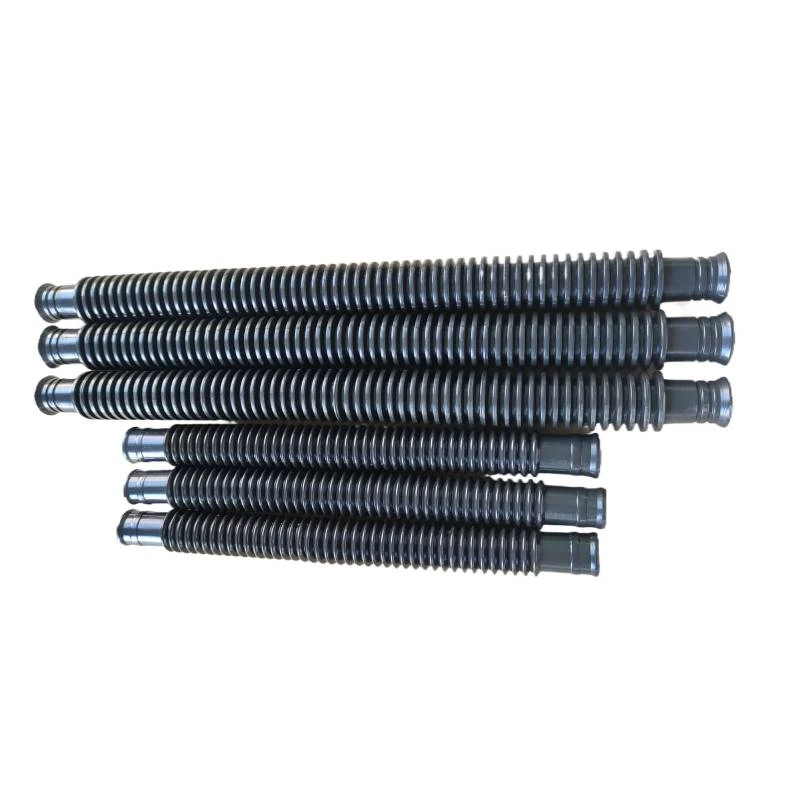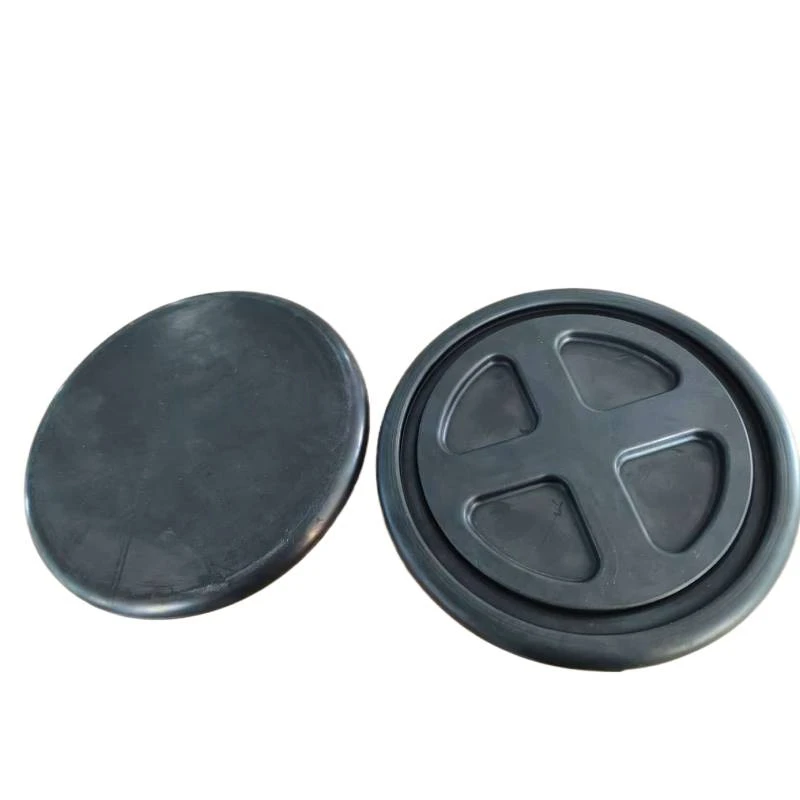
- Afrikaans
- Albanian
- Amharic
- Arabic
- Armenian
- Azerbaijani
- Basque
- Belarusian
- Bengali
- Bosnian
- Bulgarian
- Catalan
- Cebuano
- chinese_simplified
- chinese_traditional
- Corsican
- Croatian
- Czech
- Danish
- Dutch
- English
- Esperanto
- Estonian
- Finnish
- French
- Frisian
- Galician
- Georgian
- German
- Greek
- Gujarati
- haitian_creole
- hausa
- hawaiian
- Hebrew
- Hindi
- Miao
- Hungarian
- Icelandic
- igbo
- Indonesian
- irish
- Italian
- Japanese
- Javanese
- Kannada
- kazakh
- Khmer
- Rwandese
- Korean
- Kurdish
- Kyrgyz
- Lao
- Latin
- Latvian
- Lithuanian
- Luxembourgish
- Macedonian
- Malgashi
- Malay
- Malayalam
- Maltese
- Maori
- Marathi
- Mongolian
- Myanmar
- Nepali
- Norwegian
- Norwegian
- Occitan
- Pashto
- Persian
- Polish
- Portuguese
- Punjabi
- Romanian
- Russian
- Samoan
- scottish-gaelic
- Serbian
- Sesotho
- Shona
- Sindhi
- Sinhala
- Slovak
- Slovenian
- Somali
- Spanish
- Sundanese
- Swahili
- Swedish
- Tagalog
- Tajik
- Tamil
- Tatar
- Telugu
- Thai
- Turkish
- Turkmen
- Ukrainian
- Urdu
- Uighur
- Uzbek
- Vietnamese
- Welsh
- Bantu
- Yiddish
- Yoruba
- Zulu
1.5" Rubber Plug: Durable Seal, Versatile Use
The Indispensable Role of 1.5 Rubber Plugs in Modern Industrial Systems
In the intricate landscape of industrial engineering and manufacturing, seemingly minor components often play critically important roles in ensuring operational integrity, safety, and efficiency. Among these, the 1.5 rubber plug stands out as a versatile and indispensable sealing and protective solution across a multitude of sectors. This specialized component, frequently referred to as a dust plug or sealing bung, is engineered to provide robust protection against environmental contaminants, prevent fluid or gas leakage, and act as a temporary or permanent closure for orifices, ports, and openings. Its precise dimension, often specified in inches or millimeters (e.g., 1.5 inches nominal diameter), signifies its application in standardized piping, tubing, or equipment ports. The fundamental design of a rubber plug leverages the inherent elasticity and resilience of various elastomer compounds, allowing it to conform precisely to the contours of an opening, thereby creating a tight and reliable seal. These plugs are not merely static barriers; they are dynamic elements designed to withstand a range of operational stresses, including variations in temperature, pressure, chemical exposure, and mechanical vibrations. Their utility extends from safeguarding sensitive electronic components during transit or storage to sealing hydraulic lines in heavy machinery and capping off drainage systems in industrial plants. The choice of material—whether EPDM, NBR, Silicone, Viton, or Natural Rubber—is paramount, directly influencing the plug's resistance to specific chemicals, temperature extremes, and UV degradation, thereby dictating its suitability for particular environments. For instance, in applications demanding high temperature resistance and excellent chemical compatibility with aggressive fluids, a Viton-based 1.5 rubber plug would be preferred over a standard NBR variant. Conversely, EPDM offers superior resistance to ozone and outdoor weathering, making it ideal for external industrial installations. The strategic deployment of these plugs ensures compliance with stringent industry standards, mitigates potential environmental hazards, and extends the operational lifespan of expensive capital equipment by preventing ingress of harmful particles or moisture. This comprehensive guide will delve into the technical intricacies, application diversity, manufacturing precision, and critical selection criteria for these vital industrial components, empowering B2B decision-makers and technical personnel to make informed procurement and implementation choices.
Current Industry Trends and Market Dynamics for Rubber Plugs
The market for rubber plugs, particularly for standard dimensions like the 1.5 rubber plug, is experiencing dynamic shifts driven by several overarching industry trends. Firstly, the burgeoning emphasis on environmental protection and stringent regulatory compliance is propelling demand for sealing solutions that prevent leaks and control emissions. Industries such as petrochemical, pharmaceutical, and wastewater treatment are increasingly adopting advanced rubber compounds that offer superior chemical resistance and longevity, thereby reducing the frequency of replacements and minimizing environmental impact. For instance, according to a report by Grand View Research, the global industrial rubber products market size was valued at USD 136.5 billion in 2022 and is projected to grow at a compound annual growth rate (CAGR) of 6.3% from 2023 to 2030, with sealing products forming a significant segment of this growth due to ongoing industrialization and infrastructure development. Secondly, the push towards automation and Industry 4.0 paradigms in manufacturing facilities necessitates components that can withstand more demanding operating conditions and integrate seamlessly into automated assembly processes. This often translates to a need for plugs with tighter tolerances, enhanced durability, and consistent material properties that ensure reliable performance in high-speed production lines. The adoption of smart manufacturing processes, including predictive maintenance, also requires components that exhibit predictable failure modes or extended service lives, which rubber plugs, when manufactured to precise specifications, can deliver. Thirdly, the diversification of application fields is expanding the market reach of these plugs beyond traditional heavy industries. Emerging sectors such as renewable energy (e.g., solar panel manufacturing, wind turbine maintenance), electric vehicle (EV) production, and advanced robotics are increasingly relying on specialized rubber plugs for temporary sealing, dust protection, and masking during coating or painting processes. For example, in EV battery manufacturing, specialized silicone 1.5 rubber plugs are used to protect sensitive ports during electrophoretic deposition (EPD) or liquid cooling system assembly, demanding materials that are highly resistant to specific chemicals and temperature cycling. Finally, the global supply chain disruptions witnessed in recent years have highlighted the importance of robust and localized manufacturing capabilities, encouraging a trend towards diversified sourcing and strategic partnerships with reliable suppliers who can guarantee consistent quality and timely delivery of essential components like rubber plugs. This has also led to a greater focus on material innovation, with suppliers exploring new polymer blends and composites to enhance the performance characteristics of rubber plugs while potentially reducing production costs or improving sustainability profiles.
Technical Specifications and Parameters for Optimal Performance
Understanding the critical technical specifications and parameters is fundamental to selecting the appropriate 1.5 rubber plug for any given application. These parameters define the plug's physical properties, chemical resistance, and operational limits, ensuring it meets the rigorous demands of industrial environments. Key specifications include material type, hardness (durometer), tensile strength, elongation at break, compression set, and temperature range. The material choice is perhaps the most critical determinant of a plug's performance. For instance, Ethylene Propylene Diene Monomer (EPDM) is widely recognized for its excellent resistance to ozone, UV radiation, weathering, and polar solvents, making it ideal for outdoor applications and those involving water or steam. Nitrile Butadiene Rubber (NBR), conversely, excels in applications requiring resistance to oils, fuels, and non-polar solvents, commonly found in hydraulic and pneumatic systems. Silicone offers superior flexibility across a broad temperature range (typically -60°C to +230°C) and is chemically inert, making it suitable for food-grade, medical, and high-temperature sealing applications. Fluoroelastomers like Viton are prized for their exceptional chemical resistance to aggressive acids, bases, and hydrocarbons, along with high-temperature stability, essential in chemical processing and automotive sectors. Hardness, measured in Shore A durometer, indicates the material's resistance to indentation, with common values for rubber plugs ranging from 40 to 90 Shore A. A softer plug (e.g., 50 Shore A) offers better sealing conformability on irregular surfaces, while a harder plug (e.g., 70 Shore A) provides greater durability and resistance to abrasion or extrusion under high pressure. Tensile strength, measured in psi or MPa, denotes the maximum stress a material can withstand before breaking when stretched, directly correlating to the plug's robustness. Elongation at break, expressed as a percentage, indicates how much a material can stretch before fracturing, reflecting its flexibility and ability to accommodate deformation. Compression set is a crucial parameter for sealing applications, representing the permanent deformation of the rubber after a prolonged compressive force at a specific temperature; a lower compression set indicates better sealing integrity over time. Furthermore, specific chemical compatibility data, verified against industry standards like ASTM D2000 for rubber materials, is indispensable for applications involving corrosive media. Dimensions, including nominal diameter, plug length, and taper, must be precisely matched to the target orifice to ensure a secure friction fit or effective seal. For instance, a 1.5-inch nominal diameter plug might have a base diameter slightly larger than 1.5 inches to create an interference fit, while its top diameter could be smaller to facilitate insertion.

Fig 1: Illustrative example of a typical 1.5 rubber plug showing key dimensions.
Common 1.5 Rubber Plug Parameters Overview
| Parameter | Typical Range/Value for 1.5 Rubber Plug | Significance |
|---|---|---|
| Nominal Diameter | 1.5 inches (approx. 38.1 mm) | Standard size for common industrial openings. |
| Material Type | EPDM, NBR, Silicone, Viton, Natural Rubber | Determines chemical resistance, temperature range, and environmental suitability. |
| Hardness (Shore A) | 40-90 Shore A | Impacts sealing conformability vs. durability. |
| Temperature Range | -60°C to +260°C (material dependent) | Operational thermal limits. |
| Tensile Strength | 5-20 MPa (725-2900 psi) | Material robustness and resistance to tearing. |
| Elongation at Break | 150-600% | Flexibility and ability to deform without fracturing. |
| Compression Set | 5-30% (after 22 hrs @ 70°C) | Indicates sealing longevity and resistance to permanent deformation. |
| Chemical Resistance | Varies by material (e.g., oil, acid, alkali, solvent, ozone) | Crucial for compatibility with specific industrial fluids and gases. |
The Advanced Manufacturing Process of High-Performance 1.5 Rubber Plugs
The production of a high-quality 1.5 rubber plug is a sophisticated multi-stage manufacturing process, far removed from simple molding. It begins with meticulous material selection and compounding, where raw elastomers (like SBR, EPDM, NBR, Silicone, or Viton) are mixed with various additives, including vulcanizing agents (e.g., sulfur or peroxides), accelerators, activators, fillers (e.g., carbon black or silica for strength), plasticizers, and anti-degradants (e.g., anti-ozonants, UV stabilizers). This compounding process, typically performed in internal mixers or two-roll mills, is critical as it determines the final physical, chemical, and mechanical properties of the rubber compound. The precise formulation is tailored to the intended application, considering factors like temperature resistance, chemical compatibility, hardness, and durability. Once compounded, the material is pre-formed, often through extrusion or calendering, into shapes suitable for the subsequent molding stage. For rubber plugs, the primary manufacturing processes are compression molding, transfer molding, or injection molding.
In compression molding, the pre-measured rubber compound (often in a pellet or pre-form shape) is placed into an open mold cavity. The mold is then closed, and under heat and pressure (typically 150-200°C and several hundred psi), the rubber flows to fill the cavity and undergoes vulcanization (curing), a chemical process that forms cross-links between polymer chains, transforming the soft, plastic rubber into a durable, elastic material. This method is cost-effective for medium to high-volume production and offers good material utilization.
Transfer molding is a variation where the rubber compound is pre-heated in a separate chamber, then forced through sprues and runners into the closed mold cavity. This method offers tighter dimensional control and less flash than compression molding, making it suitable for more complex shapes and higher precision requirements.
Injection molding, the most automated and precise method, involves heating the rubber compound in an extruder barrel until it becomes molten, then injecting it under high pressure into a closed, heated mold cavity. This process offers rapid cycle times, excellent repeatability, and minimal material waste, ideal for high-volume production of intricate parts with tight tolerances. After molding, the plugs undergo a de-flashing process to remove excess material (flash) from the mold parting lines, often using cryogenic tumbling or mechanical trimming.
Quality control is integrated throughout the process. Incoming raw materials are inspected for purity and consistency. During compounding, rheological properties are monitored. Post-molding, each batch of 1.5 rubber plugs undergoes rigorous inspection. This includes dimensional verification using optical comparators or calipers, hardness testing (Shore A), visual inspection for defects (e.g., voids, cracks, un-filled areas), and performance testing. Performance tests may include tensile strength and elongation at break (ASTM D412), compression set (ASTM D395), and sometimes specific environmental tests like ozone resistance (ASTM D1149) or fluid immersion tests (ASTM D471) to ensure the product meets application-specific requirements. Adherence to international standards like ISO 9001 (Quality Management System) and ISO/TS 16949 (for automotive applications) ensures consistency and traceability. The lifecycle of these plugs, when manufactured to such standards, can range from a few months in highly aggressive environments to many years in less demanding applications, offering significant return on investment. In industries like petrochemical and metallurgy, a robust 1.5 rubber plug, designed for severe duty cycles, plays a vital role in preventing catastrophic failures by providing a reliable seal in pipelines, valves, or processing equipment, thereby contributing to energy efficiency by preventing leakage and reducing maintenance downtime due to premature component failure.
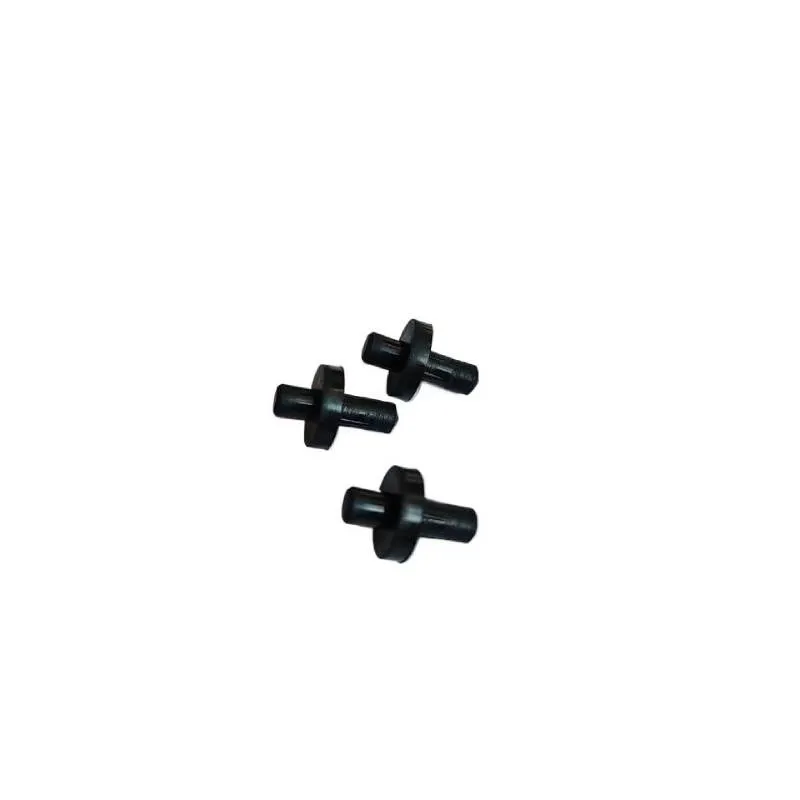
Fig 2: A visual representation of the precision molding process for rubber components.
Diverse Application Scenarios and Key Technical Advantages
The versatility of the 1.5 rubber plug extends across a vast array of industrial sectors, driven by its simple yet effective design and the adaptable properties of modern elastomers. In the petrochemical industry, these plugs are routinely used for temporary sealing of pipes, flanges, and valves during maintenance, cleaning, or hydrostatic testing, preventing the ingress of contaminants or the escape of hazardous fluids. Their excellent chemical resistance (especially Viton or FKM variants) to hydrocarbons, acids, and bases ensures reliability in highly corrosive environments, contributing to both operational safety and environmental compliance. For instance, during a turnaround maintenance period in a refinery, hundreds of 1.5-inch ports might need temporary sealing to facilitate flushing or nitrogen purging, where the resilience and sealing capability of these plugs minimize material loss and ensure worker safety. In the metallurgy sector, particularly in foundries and metal finishing operations, rubber plugs serve as crucial masking devices during electroplating, anodizing, or powder coating processes. They protect internal threads, drilled holes, or sensitive surfaces from chemical baths, paint overspray, or abrasive media, ensuring a clean finish and preventing costly rework. The silicone-based 1.5 rubber plug, with its high-temperature resistance, is particularly effective in powder coating applications where curing ovens operate at temperatures exceeding 200°C.
Within water supply and drainage systems, these plugs are indispensable for isolating sections of pipelines, sealing test points, or capping off unused branches to prevent backflow, contamination, or water loss. Their ability to form a watertight seal even under moderate pressure makes them a preferred choice for municipal water treatment plants and industrial wastewater management. For example, during the repair of a 1.5-inch water line, a rubber plug can effectively stop flow to a specific branch, allowing technicians to work on a dry section without shutting down the entire system, thereby minimizing disruption and water waste. Beyond these heavy industries, the applications diversify significantly. In the automotive industry, they are used as temporary closures for fluid lines (e.g., brake fluid, fuel lines) during assembly, or as permanent dust covers for electronic components and sensor ports. In HVAC systems, they seal refrigerant lines or condensate drain ports. The electronics manufacturing sector employs them for protecting sensitive connectors and PCB ports during cleaning, soldering, or shipping. The inherent flexibility of rubber allows for easy insertion and removal, reducing labor costs and minimizing damage to sensitive equipment. Moreover, their vibration-dampening properties can enhance the longevity of connected components by reducing fatigue from mechanical stress. The critical technical advantages stem from their material science: the unique elastic deformation allows for a tight, conforming seal even against slightly irregular surfaces; their inertness provides chemical resistance against a vast array of substances; and their thermal stability ensures performance across extreme temperature gradients. These attributes collectively position the 1.5 rubber plug as a highly cost-effective and dependable solution for critical sealing and protection tasks across the industrial spectrum, leading to enhanced operational efficiency, reduced maintenance downtime, and extended asset life.
Manufacturer Comparison and Strategic Selection Criteria
When sourcing 1.5 rubber plugs, industrial buyers and engineers face a market populated by numerous manufacturers, each with varying capabilities, quality standards, and service offerings. A strategic comparison is crucial to ensure optimal product performance and long-term cost efficiency. Key differentiating factors among manufacturers typically include their adherence to international quality standards, material expertise, customization capabilities, production capacity, and post-sales support. Reputable manufacturers will proudly showcase certifications such as ISO 9001:2015, which signifies a robust Quality Management System ensuring consistent product quality and continuous improvement. Some might also hold industry-specific certifications, such as IATF 16949 for automotive applications or FDA compliance for food and medical grade silicone plugs. Beyond certifications, a manufacturer's material expertise is paramount. Do they offer a comprehensive range of elastomers (EPDM, NBR, Silicone, Viton, HNBR, etc.) tailored to specific chemical and thermal requirements? Can they provide detailed material data sheets (MDS) including tensile strength, elongation, compression set, and specific gravity, along with chemical compatibility charts? A manufacturer that genuinely understands elastomer chemistry can advise on the optimal material blend for challenging applications, potentially saving clients from costly failures. For instance, if an application involves exposure to concentrated sulfuric acid at elevated temperatures, a manufacturer proficient in fluoroelastomer (FKM/Viton) compounding would be able to recommend a specific FKM grade with enhanced chemical resistance properties, which might be overlooked by a less specialized supplier.
Customization capabilities are another critical differentiator. While the 1.5 rubber plug is a standard dimension, variations in length, head design, internal features (e.g., pull tabs, vents), or specific color requirements (for aesthetic or identification purposes) often necessitate custom tooling. Manufacturers with in-house tooling design and fabrication capabilities can offer faster prototyping and lower tooling costs, providing a significant advantage for bespoke solutions. Furthermore, evaluating a manufacturer's production capacity and lead times is vital for maintaining supply chain stability. High-volume, automated production lines signal efficiency and ability to meet large orders, while flexible scheduling indicates responsiveness to urgent requirements. Clients should also scrutinize the manufacturer's quality control processes—do they employ statistical process control (SPC)? What are their typical AQL (Acceptable Quality Limit) levels? Are batch traceability and certificates of conformity (CoC) provided with each shipment? Finally, post-sales support, including technical consultation, troubleshooting assistance, and transparent warranty policies, solidifies trust and partnership. A manufacturer that offers a comprehensive warranty, perhaps a 5-year limited warranty against manufacturing defects under specified operating conditions, demonstrates confidence in their product quality and commitment to customer satisfaction. Case studies and testimonials from existing B2B clients also provide valuable insights into a manufacturer's reliability and performance, indicating their proven track record in delivering high-quality 1.5 rubber plugs and reliable service.
Key Differentiators in 1.5 Rubber Plug Manufacturing
| Criterion | High-Tier Manufacturer | Standard Manufacturer |
|---|---|---|
| Quality Certifications | ISO 9001:2015, IATF 16949, FDA, RoHS, REACH | Basic ISO 9001 (maybe) |
| Material Range & Expertise | Comprehensive range (EPDM, NBR, Silicone, Viton, etc.) with deep chemical/physical property knowledge, custom compounding. | Limited standard materials, less guidance on specific applications. |
| Customization Capabilities | In-house tooling design, rapid prototyping, tailored solutions for specific designs/colors. | Limited to standard molds, may outsource tooling. |
| Quality Control (QC) | SPC, 100% visual inspection (for critical apps), AQL 0.65-1.0, full traceability, CoCs. | Basic batch testing, higher AQL, less detailed documentation. |
| Delivery Lead Times | Optimized logistics, often shorter lead times, expedited options available. | Standard, potentially longer lead times. |
| Technical Support & Warranty | Proactive technical consulting, comprehensive warranty (e.g., 5-year limited), responsive after-sales. | Basic support, standard product warranty. |
Tailored Customization Solutions for Specific Industrial Demands
While the standard 1.5 rubber plug fulfills a vast range of industrial needs, certain highly specialized applications necessitate bespoke customization to achieve optimal performance and integration. Professional manufacturers understand that a one-size-fits-all approach is often insufficient for critical industrial processes, and they offer extensive customization services that go beyond mere dimensional adjustments. These services encompass material engineering, design modification, color coding, and integration of additional functionalities. Material engineering is a cornerstone of advanced customization. If a standard EPDM plug shows insufficient resistance to a newly introduced chemical agent or extreme temperature cycling, a custom compound can be developed. This might involve blending different polymers (e.g., EPDM/NBR blend for improved oil resistance while retaining ozone resistance) or incorporating specific additives to enhance properties such as flame retardancy, electrical conductivity/insulation, or anti-static characteristics. For instance, in an ATEX-certified environment where static discharge is a concern, an anti-static 1.5 rubber plug compounded with conductive carbon black would be essential. Design modifications allow for adaptation to unique port geometries or functional requirements. This could involve altering the plug's taper for a more precise interference fit, adding specific grooves or ribs for improved grip or air flow, or integrating a pull tab or flange for easier insertion and removal in automated or confined spaces. For example, a client in the pharmaceutical industry might require a plug with a smooth, sterile surface finish and an integrated pull tab that can be easily gripped by gloved hands, minimizing contamination risks during handling. Customization also extends to color coding, which can be invaluable for visual identification in complex systems or for branding purposes. Different colors can denote specific material types, temperature ratings, or chemical compatibilities, streamlining inventory management and reducing the risk of incorrect plug usage. Furthermore, overmolding can be employed where a rubber plug is molded onto a metal insert or plastic component, creating a hybrid part that combines the sealing properties of rubber with the structural integrity or connectivity of another material. This is particularly useful in sensor applications or specialized connectors where a robust and integrated seal is required. The customization process typically involves a collaborative approach, starting with a detailed analysis of the client's application requirements, environmental conditions, and performance expectations. This often leads to the development of detailed CAD designs, material recommendations, prototyping, and rigorous testing against specified performance criteria, often including FEA (Finite Element Analysis) to predict stress distribution and sealing effectiveness under load. This iterative design and validation process ensures that the customized 1.5 rubber plug not only fits perfectly but also performs reliably under the most demanding industrial conditions, translating into enhanced operational efficiency and significantly reduced long-term maintenance costs.
Real-World Application Cases and Demonstrable Experience
Our extensive experience in providing sealing and protective solutions, including the ubiquitous 1.5 rubber plug, is best illustrated through real-world application cases and feedback from our diverse client base. These case studies highlight not only the versatility of our products but also our commitment to understanding and solving complex industrial challenges.
Case Study 1: Petrochemical Plant Turnaround Maintenance. A major petrochemical facility faced challenges in efficiently isolating sections of their crude oil distillation unit during a scheduled turnaround. Traditional temporary plugs often failed due to chemical attack from residual hydrocarbons and high temperatures, leading to costly delays and safety concerns. We provided customized 1.5 rubber plugs manufactured from a specialized Viton (FKM) compound, formulated for enhanced resistance to aromatic hydrocarbons and intermittent temperatures up to 200°C. These plugs featured an optimized taper for easier insertion and removal, reducing labor time by an estimated 15% per port. During the three-week turnaround, over 500 of our plugs were deployed. Post-maintenance inspections confirmed zero leaks, significantly contributing to the project's on-time completion and adherence to environmental discharge limits. The plant manager reported a "marked improvement in sealing integrity and ease of use," directly translating to operational savings.
Case Study 2: Automotive Body-in-White (BIW) Coating Line. An automotive manufacturer required a robust masking solution for critical threaded holes and precise apertures on car bodies undergoing e-coating (electrophoretic deposition) and subsequent powder coating. The existing masking tape and generic plugs frequently failed in the high-temperature E-coat bake ovens (up to 180°C) and corrosive chemical baths, resulting in rework and quality issues. Our solution involved developing a custom-designed, high-temperature silicone 1.5 rubber plug with a unique flange profile for secure fit and a bright, easily visible color. These plugs were engineered to withstand prolonged exposure to acidic e-coat baths and oven temperatures without degradation or leaving residues. Feedback from the client's quality assurance team indicated a 40% reduction in masking-related defects, significantly improving throughput and reducing scrap rates. The client lauded the "exceptional durability and perfect fit," which streamlined their coating process.
Case Study 3: Wastewater Treatment Plant (WWTP) Pipe Isolation. A municipal WWTP needed a reliable method for temporary pipe isolation during repair work on 1.5-inch diameter aeration lines. The previous foam plugs were prone to failure under moderate backpressure and offered poor chemical resistance to the varied wastewater composition. We supplied a series of durable EPDM 1.5 rubber plugs known for their excellent resistance to water, ozone, and dilute acids/alkalis commonly found in wastewater. The plugs were designed with an internal structure that enhanced their resistance to expulsion under pressure. In a field trial involving continuous flow diversion for 48 hours, our plugs maintained an impermeable seal, allowing maintenance crews to complete repairs efficiently and safely without needing to shut down larger sections of the plant. The operations supervisor praised the plugs for their "unwavering reliability and ease of deployment," noting a considerable reduction in localized flooding incidents during maintenance. These application stories underscore our capability to deliver tailored, high-performance rubber solutions that address specific industrial challenges, proving our expertise and experience in critical operational environments.
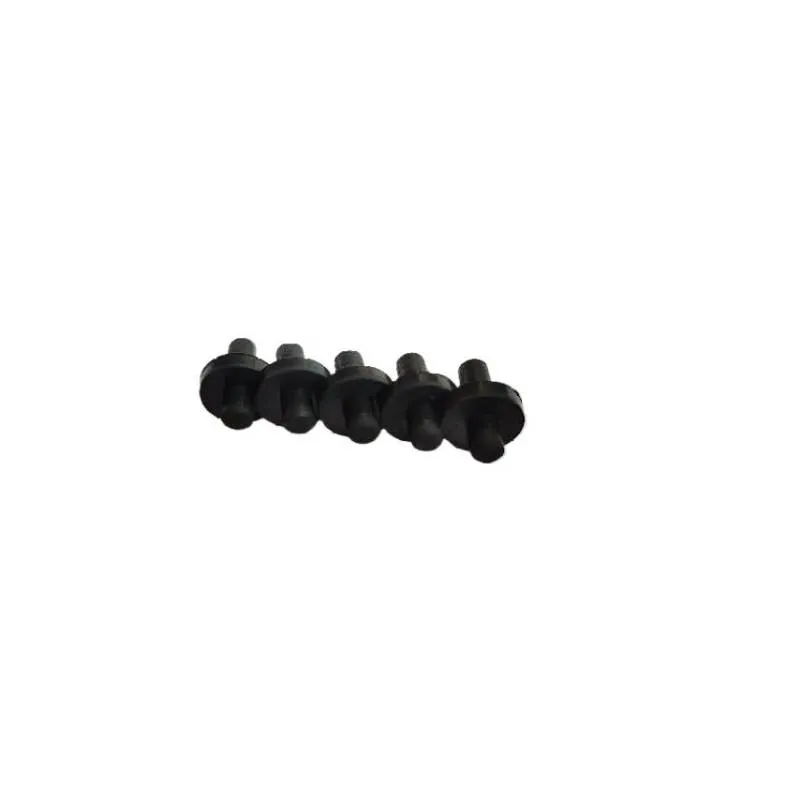
Fig 3: Example of a 1.5 rubber plug in an industrial setting, providing critical protection.
Ensuring Trust and Authority: Certifications, Warranty, and Support
Building and maintaining trust in the B2B sector, especially for critical components like the 1.5 rubber plug, relies heavily on demonstrable authority and unwavering commitment to quality and customer satisfaction. Our authority in the field is underscored by adherence to stringent international standards and a transparent approach to product performance and support. We operate under a robust ISO 9001:2015 certified Quality Management System, ensuring that every stage, from raw material procurement to final product inspection, meets globally recognized benchmarks for quality and consistency. This certification is not merely a formality; it represents our continuous commitment to process optimization, risk management, and customer-centric improvements, which directly translates into reliable and defect-free 1.5 rubber plugs for our clients. Beyond ISO 9001, our products, particularly those for sensitive applications, comply with specific regulatory requirements such as RoHS (Restriction of Hazardous Substances) and REACH (Registration, Evaluation, Authorisation and Restriction of Chemicals), affirming our dedication to environmental responsibility and product safety. For medical or food-grade applications, our silicone products can be manufactured to FDA compliance, undergoing rigorous testing for biocompatibility and material purity as per CFR 21 177.2600. Our long-standing service tenure in the industrial gasket and sealing solutions market, extending over [e.g., 15 years] since our inception, has equipped us with unparalleled expertise and a deep understanding of industry demands. We have partnered with leading companies across various sectors, including automotive, aerospace, oil & gas, and renewable energy, earning their trust through consistent delivery of high-performance products and technical consultation. This extensive client portfolio and sustained service record serve as a testament to our authoritativeness in the field. Our products undergo rigorous internal and third-party testing to validate performance claims. Test data sheets, including results for tensile strength, elongation, compression set, and specific chemical resistance, are available upon request, providing empirical evidence of our products' capabilities. We stand by the quality and durability of our 1.5 rubber plugs with a comprehensive warranty. We offer a 5-year limited warranty against defects in material and workmanship when products are used under specified operating conditions, providing our clients with peace of mind and demonstrating our confidence in our manufacturing processes. Furthermore, our commitment to customer support extends beyond sales. Our technical support team, comprised of experienced engineers and material scientists, is readily available to assist with product selection, application troubleshooting, and custom design inquiries. We prioritize responsive communication and efficient problem resolution, ensuring minimal disruption to our clients' operations. Delivery cycles are streamlined to meet industrial demands, with standard lead times ranging from 2-4 weeks for regular orders and expedited options available for urgent requirements, ensuring our clients receive their critical components precisely when needed, upholding operational continuity and efficiency.
Frequently Asked Questions (FAQs) About 1.5 Rubber Plugs
- Q1: What is the primary difference between EPDM and NBR 1.5 rubber plugs, and when should I choose one over the other?
- A1: The primary difference lies in their chemical resistance and temperature range. EPDM (Ethylene Propylene Diene Monomer) offers excellent resistance to ozone, UV radiation, weathering, steam, water, and polar solvents, making it ideal for outdoor applications, automotive cooling systems, and water treatment. However, EPDM has poor resistance to petroleum-based oils and fuels. NBR (Nitrile Butadiene Rubber), conversely, excels in resistance to oils, fuels, greases, and non-polar solvents, commonly found in hydraulic systems, fuel lines, and machinery. NBR also has good abrasion resistance. You should choose EPDM when exposed to environmental elements, water, or steam, and NBR when exposed to oils, fuels, or lubricants. Both are widely available as a 1.5 rubber plug, so the choice is entirely dependent on the specific chemical and thermal environment of your application.
- Q2: How do I determine the correct hardness (durometer) for a 1.5 rubber plug in my application?
- A2: The durometer, typically measured in Shore A, indicates the rubber's hardness and its resistance to indentation. A softer plug (e.g., 40-60 Shore A) offers better conformability to irregular surfaces, creating a tighter seal, especially in low-pressure applications or where the mating surface is not perfectly smooth. However, softer plugs may be less resistant to extrusion under high pressure or abrasion. A harder plug (e.g., 70-90 Shore A) provides greater durability, resistance to wear, and can withstand higher pressures, but it might require more force to insert and may not seal as effectively on uneven surfaces. For a standard 1.5 rubber plug used for dust protection or masking, a mid-range hardness like 60-70 Shore A is often suitable, offering a balance of sealability and durability. For high-pressure or dynamic applications, a higher durometer might be necessary to prevent deformation and maintain sealing integrity. Consulting with our technical team can help pinpoint the optimal durometer for your specific needs.
- Q3: What are the typical lead times for custom 1.5 rubber plugs, and what information do you need for a quote?
- A3: Typical lead times for custom 1.5 rubber plugs can vary depending on the complexity of the design, the chosen material, and current production schedules. Generally, tooling fabrication for new custom designs might take 3-6 weeks, followed by a production run of 2-4 weeks after sample approval. For repeat custom orders where tooling is already established, lead times can be significantly shorter, often mirroring standard product lead times of 2-4 weeks. To provide an accurate quote and timeline, we require detailed information including: CAD drawings or precise dimensions (with tolerances), the intended application and operating environment (temperature, pressure, chemical exposure), desired material type and hardness, estimated annual volume, any specific performance requirements (e.g., compression set, tensile strength), and any relevant industry standards or certifications. The more comprehensive the information provided, the more precise and efficient our quotation and production planning will be for your custom 1.5 rubber plug solution.
Further Resources and Industry Insights
For those seeking to deepen their understanding of industrial rubber components and sealing technologies, the following resources provide authoritative insights and technical data from across the industry:
- Rubber Manufacturers Association (RMA) Handbook: A comprehensive guide on the properties, testing, and applications of various rubber materials. Provides industry standards and best practices for rubber product manufacturing. https://www.rma.org/
- ASTM International - Standards for Rubber: The official source for standardized test methods, specifications, and practices related to rubber and elastomeric materials. Essential for validating product performance and material properties. https://www.astm.org/standards/rubber-products-standards-d11.html
- "Handbook of Elastomers" by Anil K. Bhowmick and Howard L. Stephens: A seminal academic text providing in-depth information on elastomer science, technology, and engineering applications. Valuable for understanding the chemical and physical basis of rubber performance. (Citation typically found in academic databases, e.g., via Google Scholar or university library access).
- SAE International Technical Papers (e.g., on Sealing Technologies): SAE publications often feature research on advanced sealing solutions and material compatibility in automotive and aerospace applications, which can be relevant to the high-performance demands of a specialized 1.5 rubber plug. https://www.sae.org/publications/technical-papers
-
Understanding PVC Pipe Fittings, Custom Plastic PartsNewsAug.04,2025
-
The Essential Guide to High-Quality Metal Building Components for Modern ConstructionNewsAug.04,2025
-
Precision OEM Metal Parts: The Definitive Guide to Sourcing ComponentsNewsAug.04,2025
-
Next-Generation HDPE Pipes and Fittings: Engineered for Maximum ResilienceNewsAug.04,2025
-
The Essential Guide to Rubber Strips, Bungs for Industrial and Home UseNewsAug.04,2025
-
Engineered Rubber Components: A Comprehensive GuideNewsAug.04,2025
-
Types of PVC Pipe Fittings for Water Supply Elbows Tees and CrossesNewsJul.18,2025



